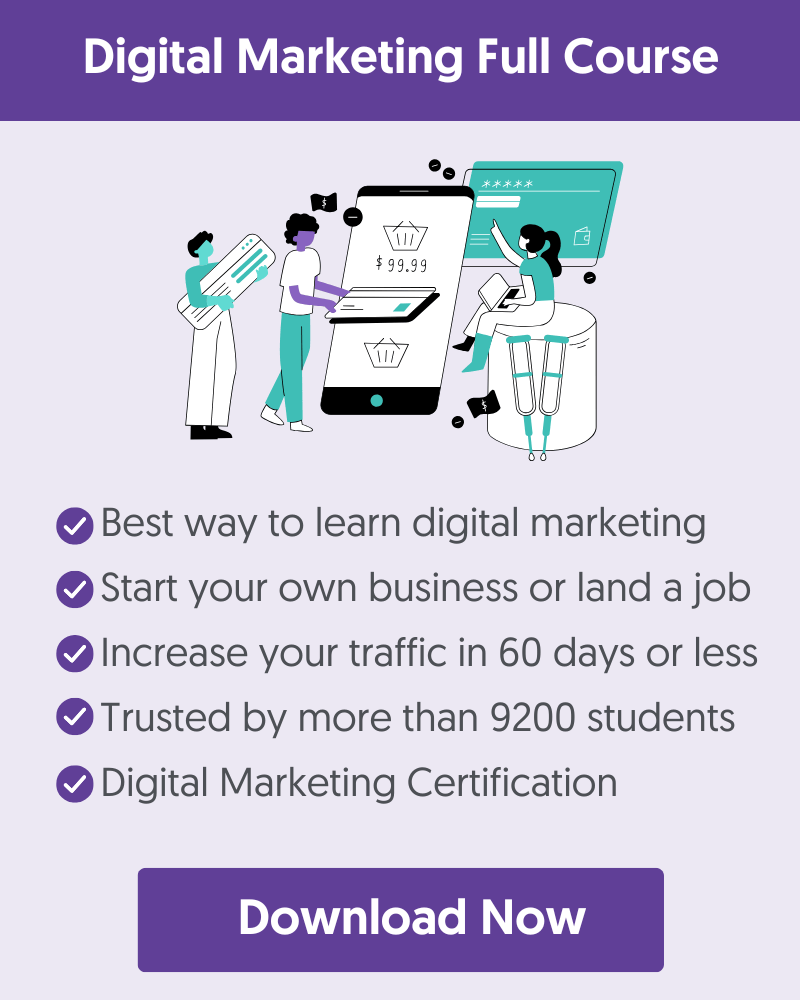There are dozens of different digital marketing channels to promote your business online. But only a handful will be effective and drive real measurable results.
In this guide, we’ll take an in-depth look at the 7 best digital marketing channels you should focus on, along with instructions on getting started.
What Are Digital Marketing Channels?
Digital marketing channels are various platforms businesses can use to reach their target audience and promote their products or services online. These might include search engines, social media networks, websites, or email.
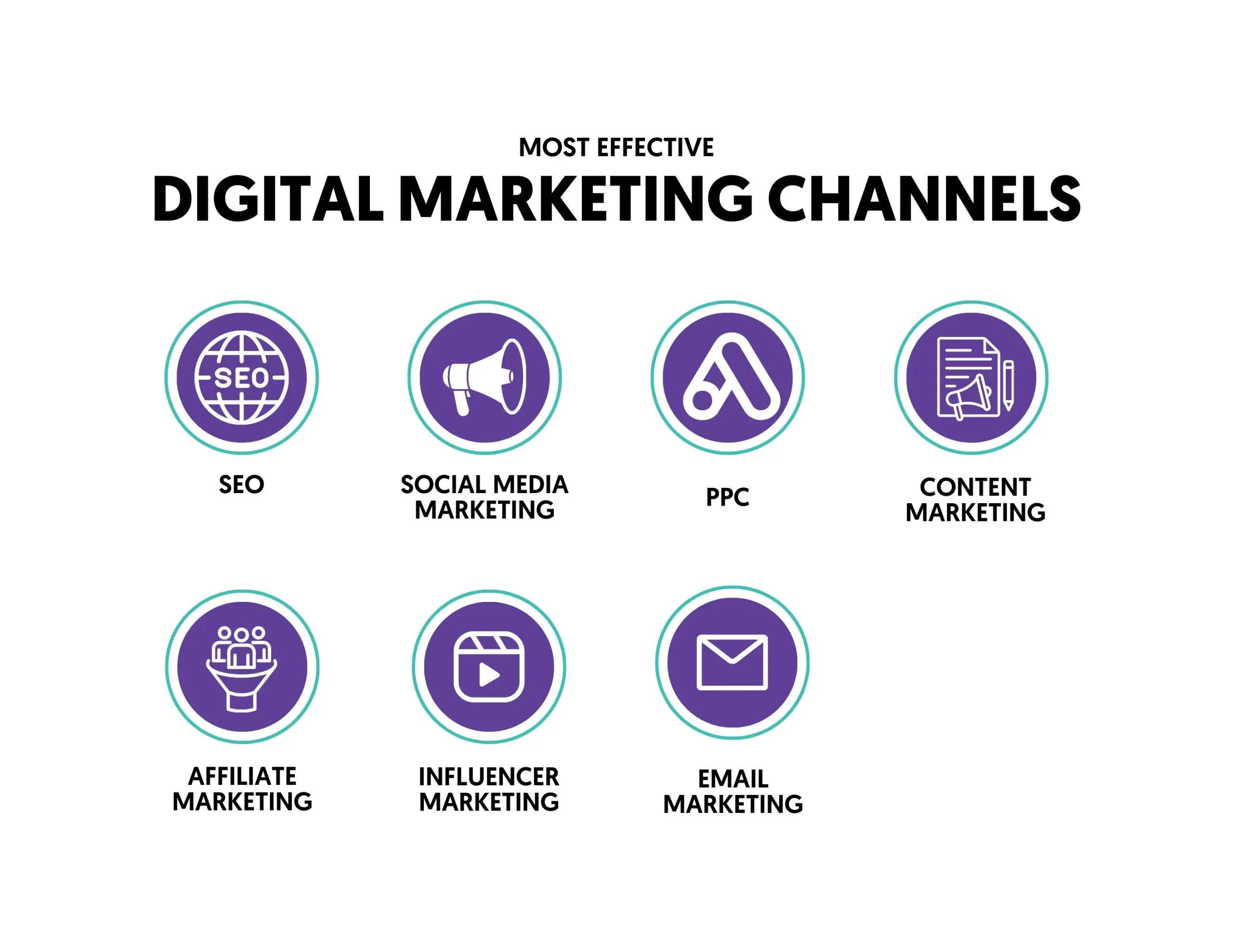
7 Effective Digital Marketing Channels
- Search Engine Optimization (SEO)
- Social Media Marketing
- Pay-Per-Click Advertising (PPC)
- Content Marketing
- Email Marketing
- Affiliate Marketing
- Influencer Marketing
1. Search Engine Optimization (SEO)
Search engine optimization is making your website and the content you produce rank higher in search engines like Google. The higher you rank in the search results, the more likely people will click on your website.
Once your website ranks on search engines, you get “free” traffic since you don’t have to pay for your website to stay visible. Compare this to Search Engine Marketing (SEM), where you must pay for your website to show up continuously.
How To Get Started With SEO
Follow these steps to start using SEO in your marketing.
Do Keyword research: Keywords are one of the most important aspects of SEO. You’ll need to know how to research the best keywords for your site and optimize your site around those keywords.
Create high-quality content: Your content must be high quality and relevant to your visitors. You also need to publish content frequently/update older content, so it always provides value to your visitors.
Go mobile-first: Mobile optimization ensures your site and content are optimized for the mobile web, where more and more users spend their time. Plus, Google predominantly indexes the mobile version of your site first.
Optimize your site structure: Ensure your website has a logical hierarchy and simple navigation. This makes it easier for search engines to crawl your site and for users to find what they need, enhancing the user experience and SEO simultaneously.
Get high-quality backlinks: Focus on building relationships and creating share-worthy content to attract backlinks from reputable sites. These backlinks act as endorsements, boosting your site's authority and improving your rankings in search engine results.
Resources to Learn More About SEO
- Best SEO Certifications (Courses and Cost) - a list of the best courses to follow and learn the secrets of SEO.
- The Complete SEO Course - a complete course that will teach you everything you’ll ever need to know about SEO
- How To Become An SEO Expert - A step-by-step guide on going from novice to expert in SEO.
2. Social Media Marketing
Social media marketing allows you to reach your target audience on social media. You can achieve various goals, including growing your social media accounts, selling more products, and sending traffic to your website.
One big reason to include social media marketing in your overall digital marketing strategy is to capture the attention of a specific audience, engage buyers, and convert customers.
The big problem with social media marketing is that organic reach (the number of people who see your posts without paying for ads) has fallen dramatically in the last few years. This means that to get results, you have to use paid social media ads.
How To Get Started With Social Media Marketing
Facebook Ads are one of the best ways to get started with social media marketing. It boasts a massive user base, and you’ll find very advanced targeting tools and various ad types to suit your goals.
There are a few different types of ads you can run depending on what you want to achieve:
- Link Click Ads. These ads send people to your external website, a specific landing page, or a blog post. These can feature images or videos.
- Boosted Page Post. This allows you to boost your post on your Facebook page to improve its reach.
- Multi-Product Ads. These ads allow you to carousel up to 10 images that feature different products.
- Lead Ads. This type of ad lets you deliver downloadable content or opt into your email list without ever leaving Facebook.
There are a handful of other ad types, but those will be the most useful if your goal is to send traffic to your website, sell products, or capture email subscribers.
Here’s a brief overview of how to run Facebook ads:
- Create a Facebook business account
- Define your target audience. You can also create lookalike and custom audiences
- Pick the right ad type for your campaign
- Create your ad creative materials
- Launch, test, and track your campaigns
Resources To Learn More About Social Media Marketing
3. Pay-Per-Click Advertising (PPC)
Pay-per-click advertising (PPC) gets traffic from search engines by running paid ads. You’ll also hear this called paid search ads or PPC marketing.
With PPC, the advertiser (you) will pay every time someone clicks on your search ad and visits your site or landing page.
Paid search results appear on top of the standard organic search results. Instead of trying to rank high in the search engines, you buy top placement.

Here are a few advantages to paid search traffic over other models:
- Cheaper than traditional advertising. Old-school advertising spots can range into thousands of dollars for both media and non-media communication channels. With PPC ads, you only pay when someone clicks your ad.
- Target your audience. You can target your audience down to your ideal customer. For example, you can narrow it by age, location, demographics, gender, income level, job, interests, and more.
- Advanced metrics to test and improve your ads. Whenever you run an ad campaign, you’ll have access to all sorts of data to sort through. With this, you’ll be able to see what’s working and create more popular ads over time.
How To Get Started With PPC Ads
If you want to start getting into paid search traffic, there are two big networks where you’ll focus all of your efforts:
Google Ads - Google owns Google Ads and lets you display ads in the Google search results, on YouTube, or across the network of sites participating in Google AdSense.
Here’s a quick overview of how Google Ads works:
- You create a Google Ads account.
- You create an advertising campaign comprised of ad groups, keywords, and ads.
- You narrow down your target audience for whom you’ll run your ads.
- You start the campaign and will pay whenever someone clicks your ad.
- You analyze the data, make changes, and steadily improve your ad campaigns.
Bing Ads -
Bing Ads is the ad network operated by Bing's search engine. It doesn’t have as wide a reach as Google, but it still makes up 7 percent of the global search engine market.
The process for running Bing ads will be very similar to creating Google ads above.
The good news about Bing is it’s not as competitive, so you’ll pay less for clicks overall. This could be a good place to start if you’re wary about wasting your budget on paid ads.
Paid search can be tough, especially if you’re a beginner, so spend extensive time on these two areas:
Resources To Learn More About PPC
4. Content Marketing
Content is the driving force of the internet, and you can harness it for your small business. All businesses have buyers at different levels of the customer awareness journey.
Content marketing addresses buyers at every level, but the initial awareness phase is a big focus. At this point, potential customers know they have a problem or need you can fulfill but aren’t quite ready to pull the trigger on a solution.
How To Get Started With Content Marketing
Content marketing does a great job of educating potential prospects and helping them solve problems, leading them to the natural solution your products and services provide.
Doing content marketing correctly also makes your visitors more receptive to the sale. Instead of overwhelming them with constant selling, you’re educating and helping until they’re ready.
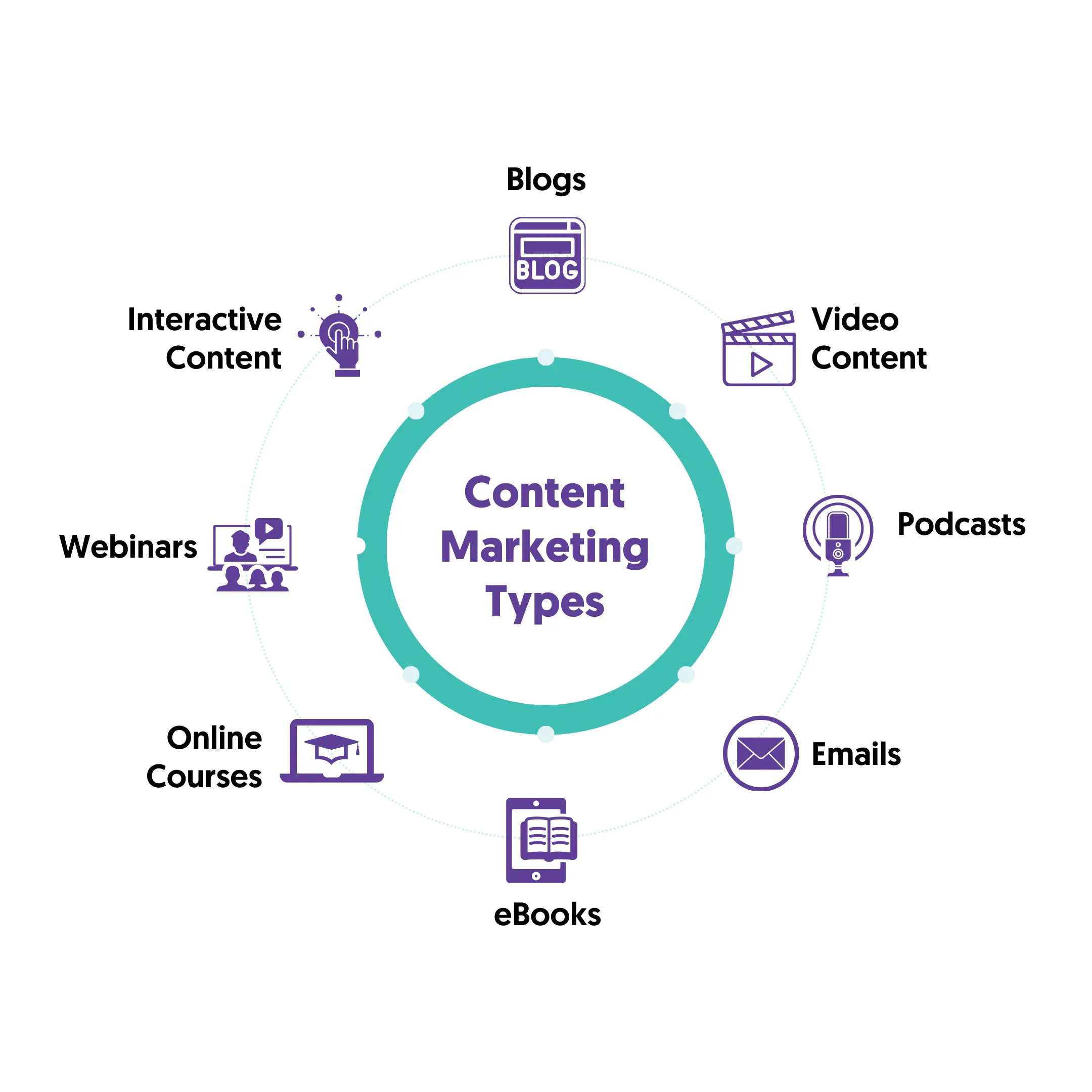
The website content you create can take many forms, including:
- Blog posts
- eBooks
- Interviews
- Infographics
- White papers
However, three forms of content are more effective than most:
Pillar Content - Pillar content seeks to be the absolute best piece of content across the internet for your chosen topic. It provides your visitors with everything they need to know about that topic.
Your pillar content can be a single page (like a long, in-depth blog post) or a cluster of topics, almost like a massive category page.
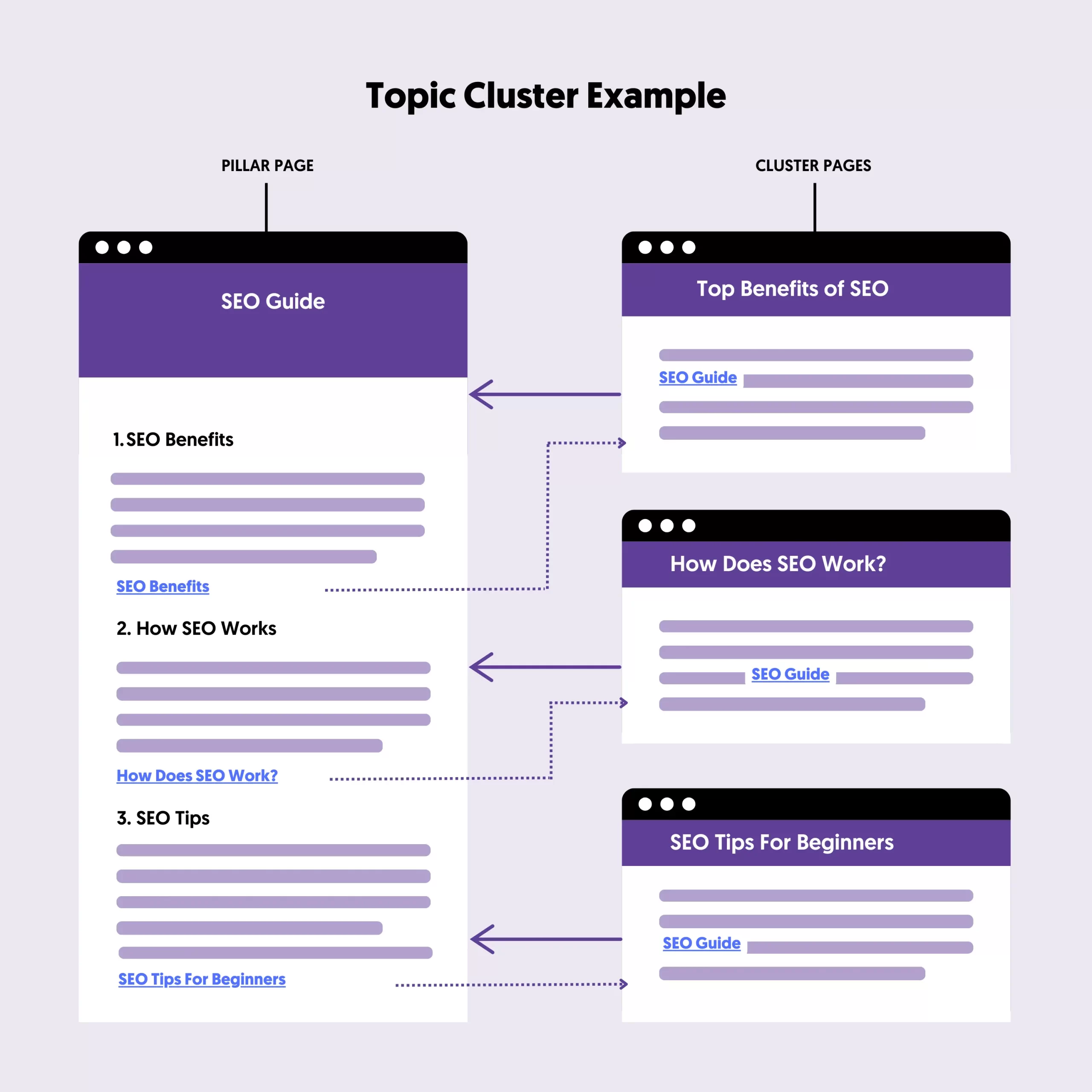
Whatever route you choose, you’ll need to satisfy the following:
- They are typically much longer than traditional blog posts
- The content is focused on a single topic
- The content is easy to navigate and broken into multiple sections
- Each of these sections will cover a sub-topic of the larger topic
Pillar pages are important because they provide users and search engines with what they want. It makes users happy since it contains all the information they need in one place, and this makes the search engines happy because it creates a great experience for their users.
Original Research - One great way to create content that should be shared and linked to is to uncover original research. That way, when people write about a topic and need a source, they’ll link to you–the source.
Here are a few methods to create original research, even if your audience is small:
- Create a Facebook poll for your friends and followers
- Create a simple survey and send it out to your email list
- Create a compelling resource, run ads to it, and require a simple survey to download the report
Case Studies -
Case studies are valuable pieces of content. They’re used to demonstrate social proof to your audience that what you offer generates results.
Case studies are very powerful sales tools. They help your visitors put themselves in the shoes of your success story. There’s a reason that Shopify has an entire section of its website dedicated to customer success stories.
No matter what type of content you choose to create, content marketing can help you achieve a variety of different goals:
- Improve your organic search engine rankings
- Help you generate leads, subscribers, and customers
- Retain existing customers
- Establish yourself as an authority in your niche
- Support your audience before and after you’ve made a sale
Resources to Learn More About Content Marketing
- Content Strategy Best Practices - how to create a winning content marketing strategy.
- How to Become a Content Marketing Specialist - the path to becoming an expert in content marketing.
- Best Content Marketing Courses - the top courses to learn content marketing fast.
5. Email Marketing
Every year, it seems that across the internet, people are claiming that “email marketing is dead”. Maybe you’ve even seen these articles yourself.
Even though this seems to arise nearly every year, it couldn’t be farther from the truth. Email is not dead. It’s thriving more than ever. In fact, with email marketing, you can earn $42 for every dollar you spend.
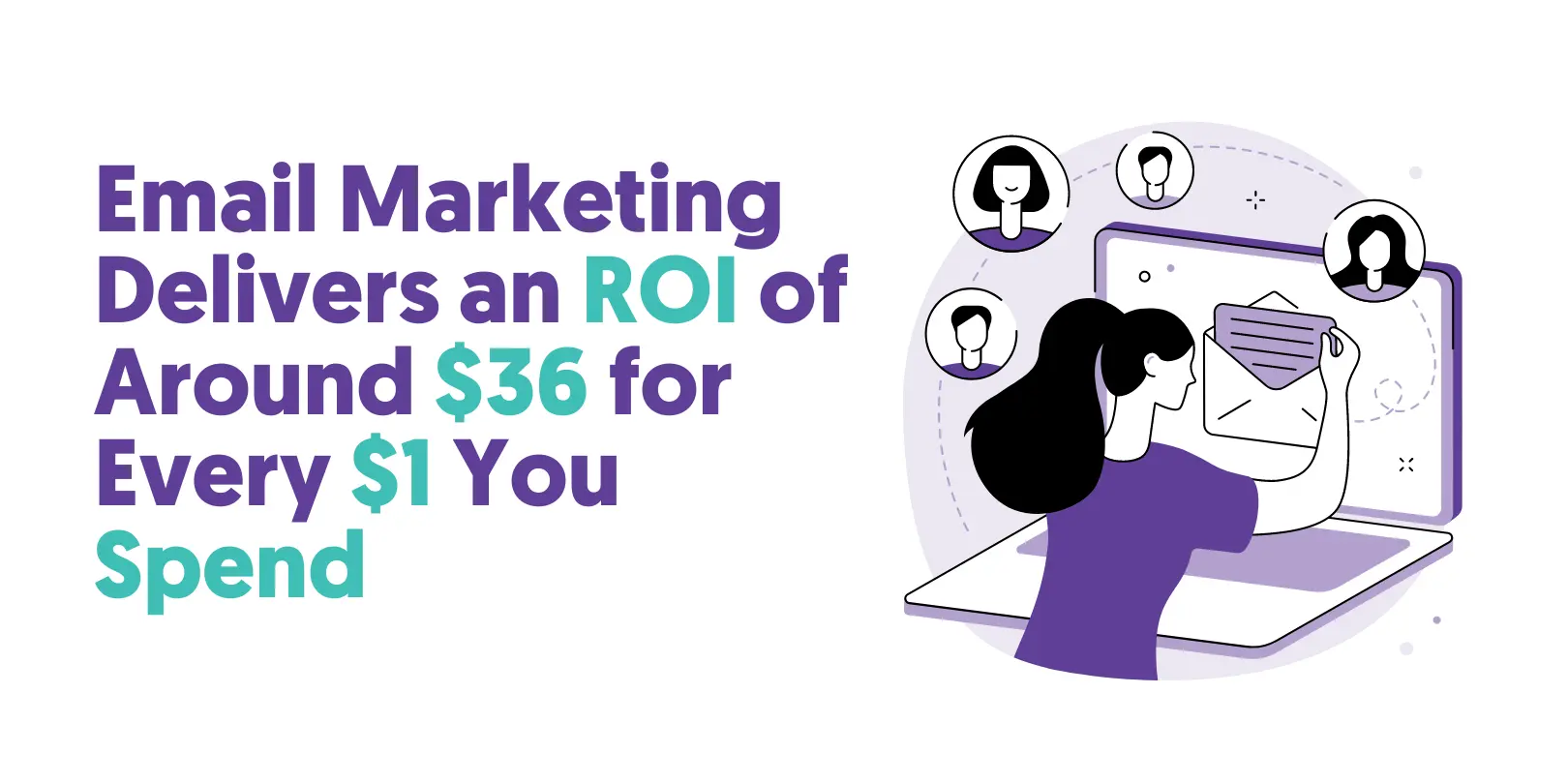
Many people won’t have a Facebook or Instagram account, but nearly everyone has an email address. This widespread usage is part of the reason email remains one of the most effective digital channels.
The main goal of email marketing is to develop deep relationships with your existing and potential customers.
Some of the most common reasons to send emails to your subscribers include:
- Building your brand
- Promoting your products and services
- Offering subscriber-only coupons
- Promoting blog posts or other content you’ve published
- Sending educational value-add content
Overall, your goal is to build rapport and stay at the front of your customer's or potential customers' minds.
How To Get Started With Email Marketing
Best of all, email marketing doesn’t have to be difficult. Here’s a simple process you can follow:
- Choose an email marketing software provider
- Create a welcome sequence that will automatically send when someone subscribes
- Encourage our website visitors to sign up via subscriber forms on your website
- Write persuasive emails that have a single link and a specific goal
- Write an engaging subject line that entices your visitors to open
- Send your email and measure the results of your campaign
Resources to Learn More About Email Marketing
6. Affiliate Marketing
is a marketing strategy where affiliates promote your products or services, and in return, they receive a percentage of the revenue generated from their referrals.
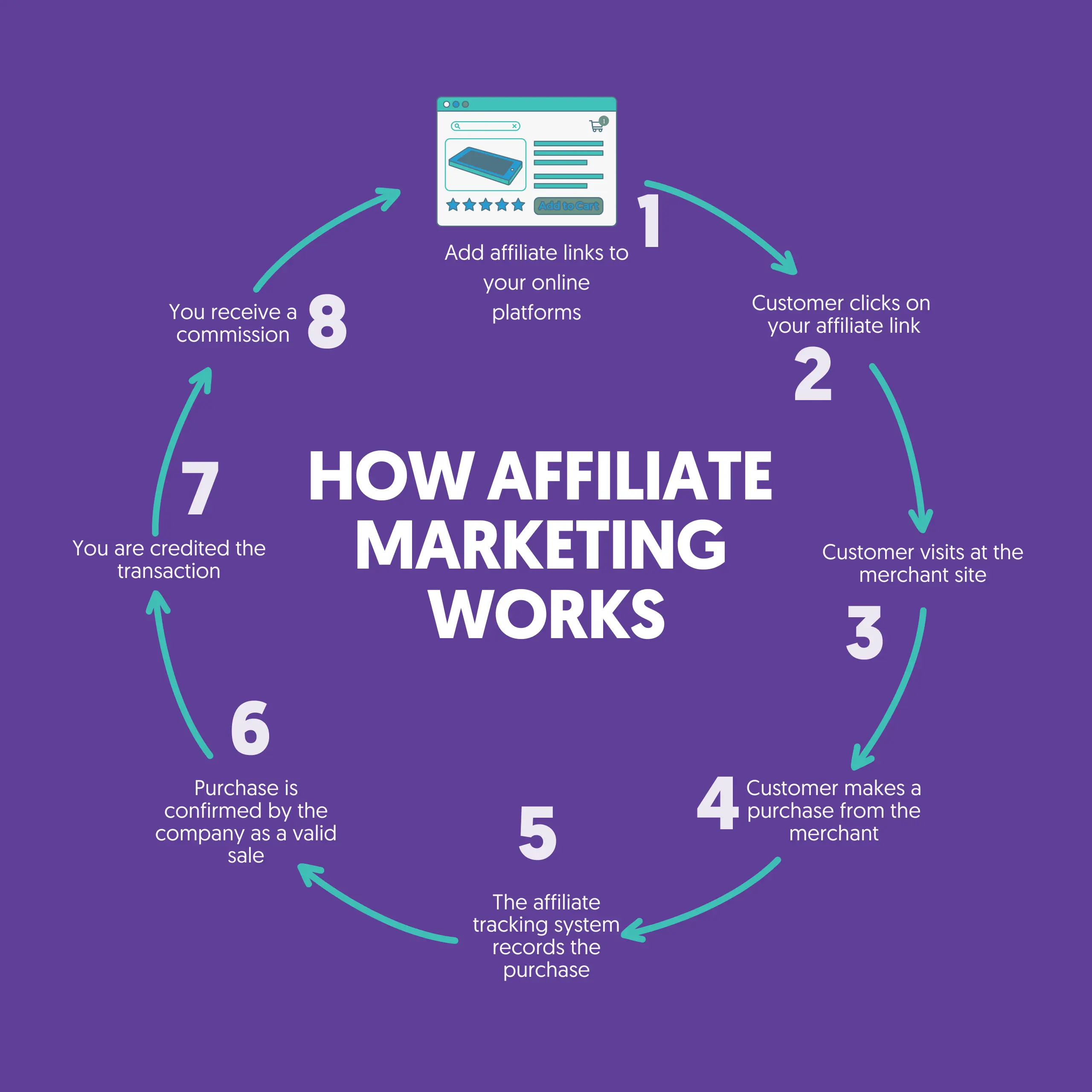
It's a very effective digital marketing channel for e-commerce sites and digital product providers, as it aligns incentives between marketers and product creators, driving sales while keeping marketing costs variable.
How To Get Started With Affiliate Marketing
- Identify influencers, bloggers, or content creators who align with your brand values and have an engaged audience relevant to your products or services.
- Establish clear, attractive commission rates. Whether a flat rate per sale or a percentage of the transaction, it should be competitive to entice high-quality affiliates.
- Provide your affiliates with high-quality content they can use in their promotions. This includes banners, product images, sample social media posts, or even exclusive promotional codes.
- Continuously monitor the performance of your affiliates. Use analytics to understand which affiliates bring the most value and optimize your strategies and support accordingly. Regularly update your offerings and marketing materials to keep the program fresh and appealing.
Resources to Learn More About Affiliate Marketing
7. Influencer Marketing
Influencer marketing leverages the reach and credibility of influential people on social media to promote your brand or product.
These influencers have a dedicated following, often in a specific niche, and their recommendations can drive awareness, credibility, and sales.
Influencer marketing is especially powerful in today’s market, where consumers rely on social proof and peer recommendations over traditional advertising.

How To Get Started With Influencer Marketing
Look for influencers whose followers match your target audience. It's not just about follower count; engagement rate, content quality, and audience relevance are key.
- Be clear about what you want to achieve – brand awareness, lead generation, or direct sales. This will shape your campaign strategy.
- Contact potential influencers with a personalized message. Explain why a partnership would be mutually beneficial and align with their content and audience.
- Work with influencers to create content that feels authentic to their style while effectively conveying your brand message. Authenticity is crucial in influencer marketing.
- Use tracking links, promo codes, and analytics tools to measure the impact of influencer collaborations on your marketing goals. Adjust your strategy based on what works best.
Resources To Learn More About Influencer Marketing
Get Started With Digital Marketing
Use the following guides to learn about the various digital marketing channels.
